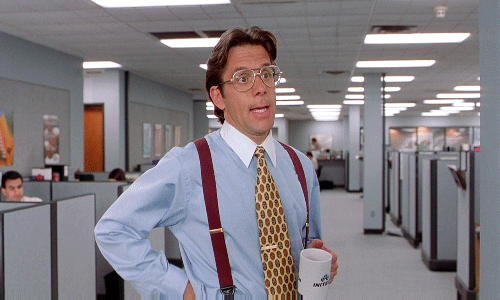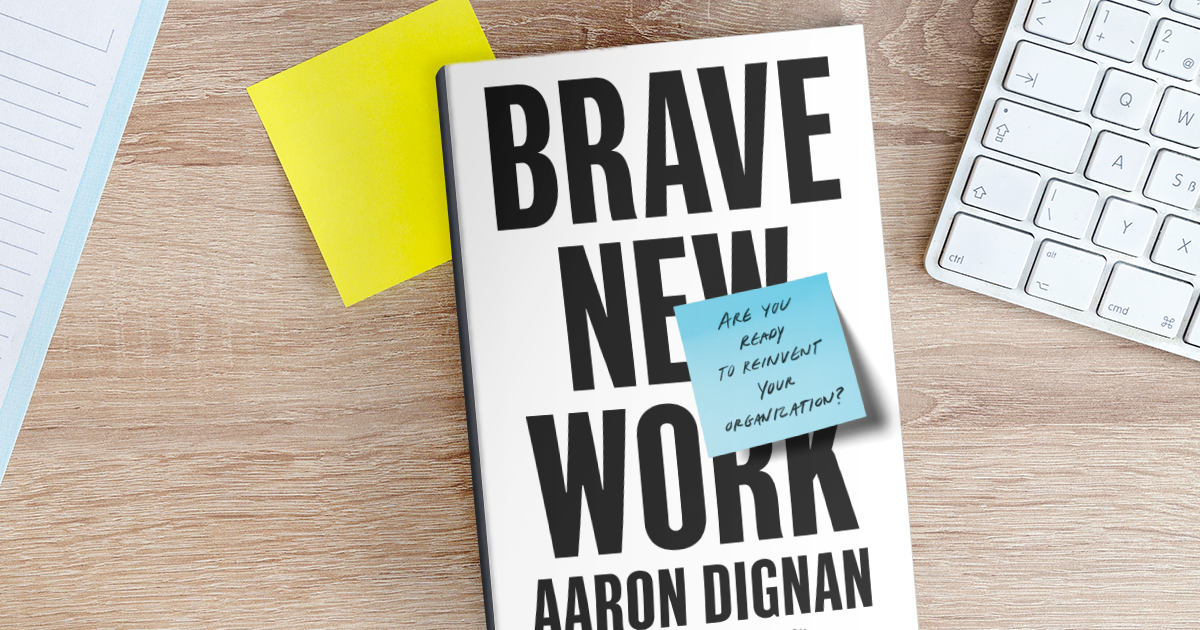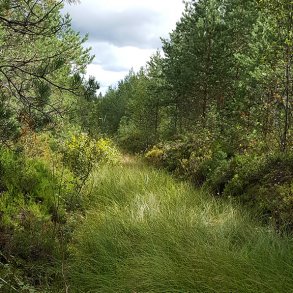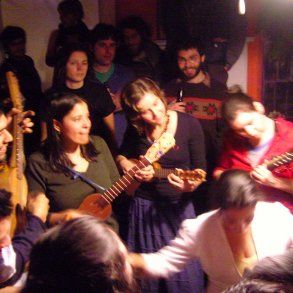By Aaron Dignan and originally published on medium.com The Ready
See the book Brave New Work and this previous EE Magazine article.
A new and improved tool for reinventing your organization – Part 1
Organization design is hard. Whether you’re the CEO of a global corporation, the founder of a startup, or a team leader inside one of the tens of thousands of companies that make our world turn, you’re up against one of the greatest puzzles ever conceived. We see evidence of this everywhere we look. Corporate longevity is down. Employee engagement is dismal. Leaders from every industry and geography tell us about the myriad problems they’re facing in their own organizations:
We need to go faster. Be more innovative. Make better decisions. Waste less time. Break down silos. Work horizontally. Simplify our structure. Focus on the customer. Increase information flow. Scale without losing what makes us great. Change our business model. Attract different talent. Retain the great talent we have.
Of course, we all know intuitively what we have to do: we have to transform the culture. But what is culture? And why does our every attempt to change it fail? Author Niels Pflaeging has a unique take on this. “Culture is like a shadow. You cannot change it, but it changes all the time. Culture is read-only.” Indeed, trying to change culture is like trying to change the weather — yell at it all you want, it’s unlikely to respond. Or worse, some of the actions we take while we’re “driving change” have unfortunate and unintended consequences.
The trouble stems (at least in part) from the fact that we still view organizations as machines—people and processes that should fit together like clockwork. Faced with a problem we think, let’s pop the hood and see which “part” needs replacing. But organizations are not nearly that predictable. Instead, they are complex systems likely to surprise and confound us. They require a completely different metaphor. Think garden, not wristwatch. They are at once interconnected, dynamic, emergent, and ever-changing.
When faced with that level of complexity and uncertainty, we tend to oversimplify. The people say, “We have the wrong leaders!” And the leaders say, “We have the wrong people!” The culture remains.
But, here’s the good news: The problem isn’t your leaders or your people. It’s your operating system.
The Organizational Operating System
Every team has at its core a set of assumptions, beliefs, principles, practices, processes, and policies that act as the foundation upon which the day-to-day work unfolds. I refer to this as an operating system (OS)—a collection of implicit and explicit constraints that shape how we operate. This organizational “DNA” is so pervasive, unquestioned, and deeply held that we don’t even notice it.
It manifests in notions like:
Employees need to be managed. Resources should be allocated through annual budgets. Leaders should set strategy. Developers should sit with developers. Meeting rooms need tables and chairs. Hourly workers should punch a clock. Employees need incentives to stay motivated and focused. And so on…
Really? Is any of that empirically true, or is it just what we do?
The notions above represent what I call our Legacy OS—the dominant view upon which modern business culture runs in almost every country on Earth. What stunning is that this way of working—which shapes the majority of our waking lives—isn’t even something that we chose. It’s something that we inherited.

Q: What year is this org chart from?
A: 1955? 1920? 2019?
The vast majority of our most important institutions in business, philanthropy, and government are leveraging an OS that was developed over 100 years ago by Frederick Taylor and his contemporaries working in factories during the Second Industrial Revolution. Their contribution was to separate the thinking from the doing by finding and enforcing the one best way to do every task, making work as controllable, predictable, and efficient as possible. The leader’s job was to study and optimize. The worker’s job was to comply and keep the pace. For the most part, they succeeded. Their methods caused a meteoric rise in quality, consistency, and productivity. Our standard of living rose. Corporations grew. And a new class of managers became undisputed masters of the universe.
But them something happened. A lot of things happened actually. Globalization. The Internet. Mobile computing. Machine learning. Automation. Startups with the potential to undermine democracy. Black Swan events like the financial crisis and the 2016 U.S. election. Interconnectedness and volatility at unprecedented levels. In the midst of all this complexity, the promise of the Legacy OS has started to fade. Slowly but surely, a way of working designed for maximum efficiency and the compliance of an unthinking workforce has become woefully outdated. Looking back, almost everything has changed. And yet, the way we work and organize has not. We are running on the organizational equivalent of MS-DOS, but it’s 2019.

There are signs of hope. More and more companies are abandoning the old ways in search of the new. And based on our experiences around the globe, leaders are finally ready to accept that their organization’s ability to adapt, innovate, grow, and remain resilient in the face of change hinges on their operating system.
An Early Canvas
In 2016, we noticed that leaders and teams struggled to articulate the principles and practices that were foundational to their OS—and worse, that they often missed the patterns and contradictions that were present in their system. So, we developed and released a simple tool to help spark new thinking. We called it The OS Canvas and released it into the wild as creative commons. To date, nearly 3,000 leaders and teams have downloaded that canvas and leveraged it in meetings, workshops, offsites, and other key moments of reflection.
We’ve seen teams use it descriptively, to articulate their way of working (or someone else’s). We’ve seen others use it diagnostically, to explore a positive or negative pattern they’ve noticed (e.g. Why do new hires feel so confused about our onboarding process?). And we’ve seen some use it aspirationally, to imagine ways their firm might evolve. For our part, we most often use it to discuss stories, tensions, and experiments that are happening inside the organizations we advise — asking the teams themselves to interpret what’s happening. But across all these applications, we started to find ways it could be both simpler and more comprehensive.
Brave New Work
By 2018, my desire to accelerate the shift away from bureaucracy had culminated in a book project called Brave New Work. This afforded me the opportunity to look more deeply at the OS Canvas (as well as the feedback we’d received) and take the tool to the next level.

Over the course of a year, I had the luxury of carefully examining and comparing the contemporary org theories of people like Bakke, de Blok, Bosgnes, Bøtter, Deming, Drucker, Edmondson, Endenburg, Fried/DHH, Getz, Grant, Gray, Hamel, Herzberg, Kirkpatrick, Kniberg, Laloux, Little, McGregor, Ohno, Peters, Pflaeging, Robertson, Semler, Senge, Snowden, Zobrist, and dozens more.
I also had a talented research team curating a collection of what the book refers to as Evolutionary Organizations—pioneers in new ways of working—cultures known for their adaptivity, speed, and humanity. This included organizations like Automattic, Basecamp, Blinkist, Bridgewater, Buffer, Burning Man, Buurtzorg, BvdV, dm-drogerie markt, Enspiral, Everlane, FAVI, Haier, Handelsbanken, Incentro, Menlo Innovations, Morning Star, Patagonia, Spotify, and W.L. Gore, just to name a few. Throughout the research, we asked one simple question:
What’s different about this organization that has allowed them to transcend bureaucracy?
As we worked our way through the theories, cases, and data, some simple but profound patterns began to emerge. Grouping the principles and practices of this community together, the original canvas morphed into twelve new dimensions that represent the proving ground for the future of work. It is in these areas that the brave and iconoclastic are taking risks. It is in these areas that recent failures will likely find their faults.

Part 2 of this article is here.
Republished with permission.
Featured Image and some paragraph spacing added by Enlivening Edge Magazine. Image by 1195798 from Pixabay




